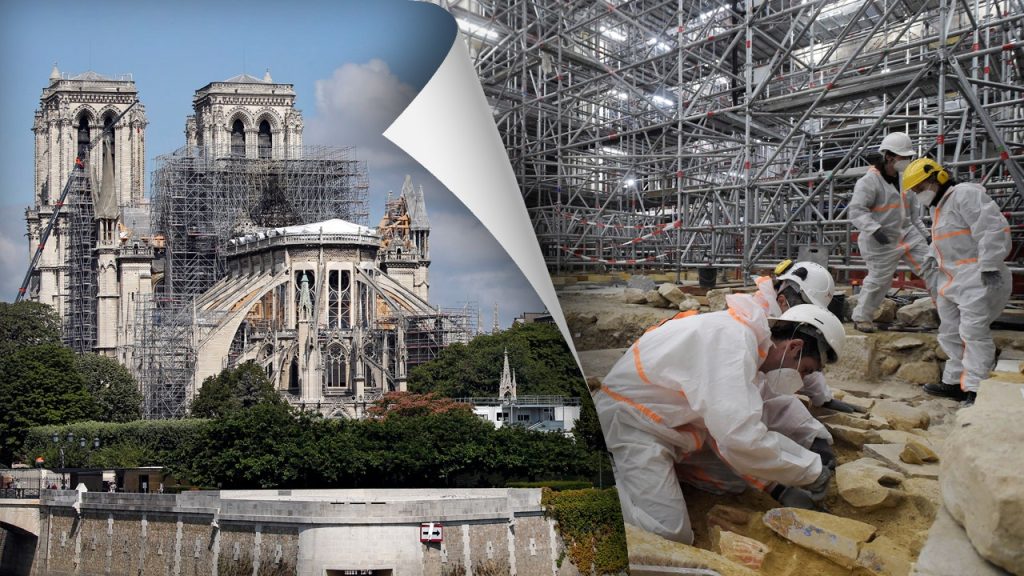Since the devastating fire at the Notre-Dame Cathedral in Paris in 2019, a massive restoration project has been underway, leading to the discovery of thousands of ancient artifacts. Among the discoveries were two lead sarcophagi under the cathedral, one of which was identified as Antoine de La Porte, a canon of the cathedral who died in 1710. The other has been hypothesized to be the famous French poet, Joachim du Bellay, who died in 1560. The identification was based on evidence such as medical conditions and lifestyle habits that matched those of du Bellay.
Despite evidence supporting the hypothesis that the unidentified sarcophagus belongs to Joachim du Bellay, some researchers still have doubts. Isotope analysis of the teeth suggested the individual lived in a different region than where du Bellay grew up. Additionally, just because his grave was not found during previous excavations does not necessarily mean his remains were not present. The ongoing research and investigation at the cathedral have led to the discovery of over 100 burials and 80 excavated sites, with more than 50 archaeologists working on various operations.
In addition to the discovery of sarcophagi, unique artwork dating back to the early 2nd century was also unearthed in England, showcasing the rich history and cultural heritage of the region. Researchers have been able to piece together the stories behind these ancient finds, shedding light on the lives of individuals who lived centuries ago. The discoveries at Notre-Dame Cathedral have provided a rare glimpse into the past, offering valuable insights into the lives of those who were buried within its walls.
Archaeologists have put forth hypotheses based on evidence found at the site, such as medical conditions and lifestyle habits, to identify the individuals buried in the cathedral. The discoveries have led to a better understanding of the history and culture of the region, providing valuable information for researchers and historians. The ongoing restoration work at the cathedral is expected to be completed by December 2024, when the site will reopen to the public. The excavations and discoveries made at Notre-Dame Cathedral serve as a testament to the enduring legacy of the historic landmark and the importance of preserving its heritage for future generations.
The findings at Notre-Dame Cathedral have sparked interest and intrigue among researchers and historians, as each discovery provides a unique insight into the lives of individuals who lived centuries ago. The uncovering of ancient artifacts and burial sites has painted a vivid picture of the past, offering a glimpse into the cultural and social practices of the time. The ongoing research and investigation at the cathedral continue to yield valuable information, helping to piece together the stories behind the ancient finds and artifacts.
The restoration project at Notre-Dame Cathedral has not only involved rebuilding the structure but also exploring its rich history and heritage through archaeological excavations. The discoveries made at the site have shed light on the lives of individuals who were buried within its walls, providing a deeper understanding of the cultural significance of the cathedral. As more research is conducted and more artifacts are unearthed, the story of Notre-Dame Cathedral continues to unfold, revealing new insights into the past and preserving the legacy of this iconic landmark for future generations to appreciate.













